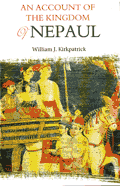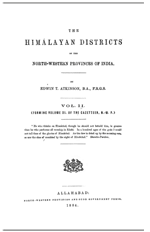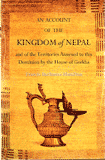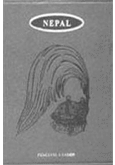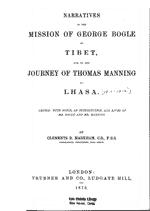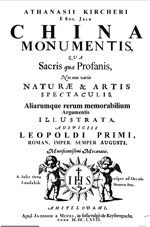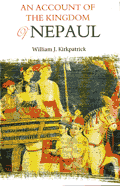
William J. Kirkpatrick, An Account of the Kingdom of Nepaul [New Delhi: Manjusri Publication House, 1969] [First published in 1811]
The Account of the Kingdom of Nepaul : being the substance of observations made during a mission to that country in the year 1793; illustrated with a map, and other engravings by Colonel William J. Kirkpatrick is the first book on Nepal’s history and its people in English.
Given its time-space context, the book is an outstanding piece of work. No Englishman before Major Kirkpatrick had passed beyond the range of lofty mountains which separated the secluded valley of ‘Nepaul’ from the north-eastern parts of Bengal – the seat of the East India Company. In 1792, when Kirkpatrick had the opportunity to reach ‘Khathmandu’ – the oldest capital in the South Asia, there were very few vague and unsatisfactory reports about the country. These casual reports were made by missionaries and itinerant traders who passed by ‘Khatmandu.’ The country was still terra incognita or an unknown place. Kirkpatrick visited the place with a mission. He was not alone. He was accompanied by Samuel Scott as his deputy, a few army majors, two companies of ‘Sepoys’ and ‘Moulavee’ Abdul Kadir Khan, an employee of the Company government in Bengal, who had resided in ‘Khathmandu’ for sometime before.
The period of Kirkpatrick’s residence in ‘Khathmandu’ was only seven weeks. By the time the book was published he was already a colonel. He came here as the representative of Lord Cornwallis, the Governor General of the Company, to mediate in the dispute between China and Nepal in the context of Sino-Nepalese War (1788-1792). The period of his stay was too short for the job that he had undertaken. Besides, it commenced “under circumstances peculiarly unfavourable to that free kind of research which alone can lead to accurate information.” However, by the time Kirkpatrick reached ‘Khathmandu’, the country had already concluded a treaty with the Chinese which entirely superseded the necessity of the proposed meditation. Nepal no longer needed the Company to fight out Tibetans and Chinese.
The treaty alluded to was never formally communicated to the British Government. In any case, Kirkpatrick made a point in his notes that the treaty just signed was not honourable to the rulers of Nepal. The Nepalese were eventually compelled to become a sort of protected state of China. It was his finding that a little more firmness on the part of the ‘Khatmandu’ government would speedily have compelled the Chinese to solicit the accommodation they needed, as they had suffered greatly during the war from sickness and scarcity, and were not less impatient to quit Nepal, than the ‘Nepaulians’ were to get rid of them.
Along with this critical message to modern readers, Kirkpatrick tried to furnish a complete account of Nepal in the book: the form of the government in existence in ‘Khatmandu’; its revenue and military establishments, its civil and religious institutions, the customs and manners of the natives of their population, their arts and manufactures, their commerce, their learning and languages; and finally, the political and natural history of the country, and so on. Describing Nepal as the only ‘Hindoo’ country which had never been disturbed, far less subdued, by any ‘Mussulman’ power, Kirkpatrick has noted that –
“In one essential particular, nevertheless, these mountaineers appear to me to be very prominently discriminated, and that is by simplicity of character universally observable amongst them. I am aware that this is a feature, which, with a few exceptions, more or less strikingly marks the ‘Hindoo’ character throughout India, but whether it be owing to the secluded situation of ‘Nepaul’, or to some cause still more operative, the simplicity which distinguishes the inhabitants of this rugged region is manifested no less in the superior than the lower ranks of people, appears in all their modes of life, whether public or domestic, little of ostentation or parade ever entering into either, and is very generally accompanied by an ‘innocency’ and suavity of deportment, by an ease and frankness in conversation, and I am disposed to think too, by an integrity of conduct not so commonly to be met with among their more polished or opulent brethren.”
Kirkpatrick admits that on some of his statements he could not but be extremely vague and defective, and that his opinions on others would necessarily be no less liable to error. In fact, there are several such errors in his book. As an example, it is mainly Kirkpatrick who erroneously set the tone of history that princes ruling Nepal for many centuries were ‘Rajepoot’ (and therefore not the Khas people) and the various classes of ‘Hindoos’ appeared in Nepal in all periods to compose a great proportion of its population (and therefore they were not natives to the land). He does not cite any piece of evidence to support his finding, but instead acknowledges that he failed to find a general resemblance in manners and customs between this part of its inhabitants, and the kindred sects in the plains of India. He also notes that “the characteristics which separate them, whether in point of manners, usages, or dress, [with those of the other ‘Hindoos’ in the plains] are so faint as to be scarcely discernible in a single instance…” Apparently, Kirkpatrick honestly believed what the local informants said to him. He had no time to look into the matter with some gravity.
In his account of Nepal, Kirkpatrick describes the route from ‘Munniary’ to ‘Hettowra’, from ‘Segouly’ to ‘Hettowra’, ‘Hettowra’ to ‘Khatmandu’, ‘Doona’ to ‘Khatmandu.’ His descriptions about the valley of ‘Nepaul’ with cities of ‘Khatmandu’, Patan, ‘Bhatgong’ and ‘Kirthipoor’, the temple of ‘Sumbhoonath’, the surrounding mountains around ‘Khatmandu’, and the ‘Bhamutty’ and ‘Bishnumutty’ Rivers are first such accounts in the history of Nepal in the perspective of a visiting alien soldier. He also tries to explain name, climate, season, soil and general face of the country. His sketch of historical ‘Nepaul’ and its boundaries, extent and several divisions must have been of significant importance to the rulers of the British India at that point of time. Here and there, Kirkpatrick has emphasized the diversity among the people among the people of Nepal, and the apparent differences that he could see among them and the ruling elite during his stay in ‘Khathmandu.’
The book comes with a rich Appendix of thirteen historical documents. It contains official papers and letters relating to Major Kirkpatrick’s mission. It also includes the account of the invasion of ‘Nepaul’ by King Prithvi Narayan Shah. This account has been extracted from Father Giusceppe’s Account of Nepal published in the second volume of the Asiatic Researches. They all are extremely important to modern readers of Nepal’s history.
